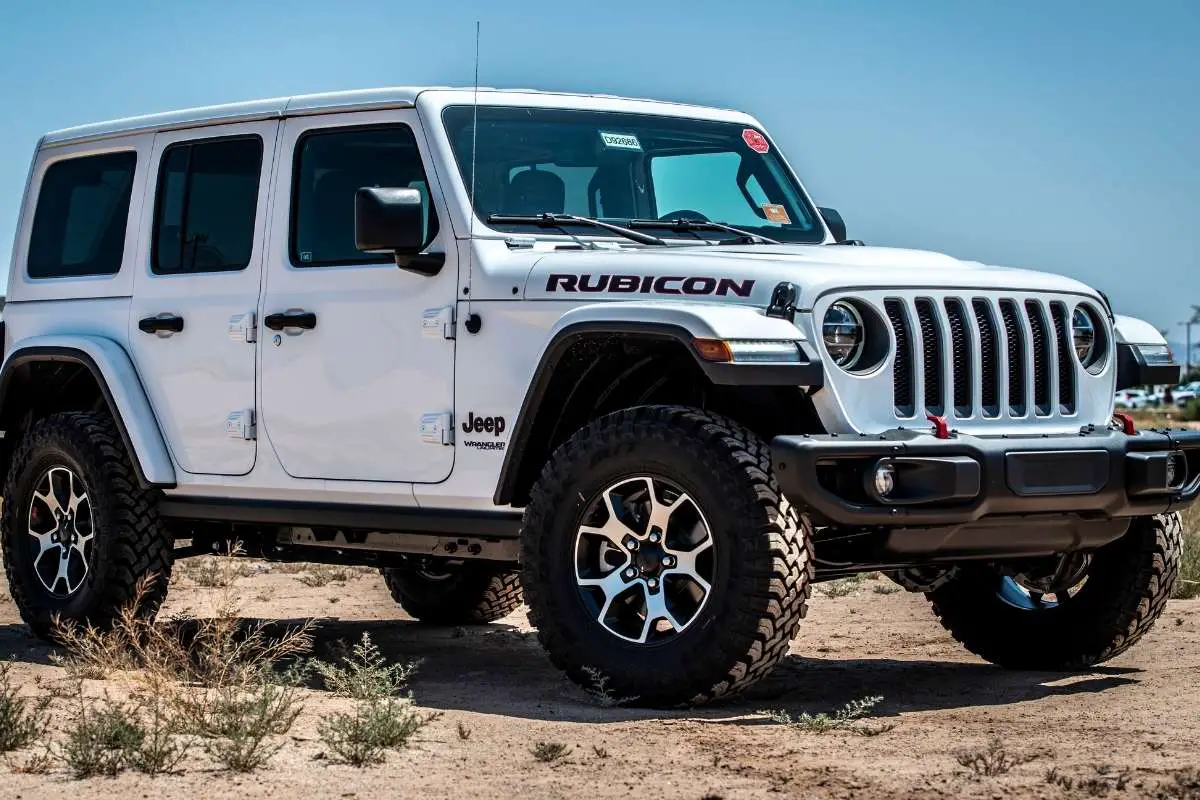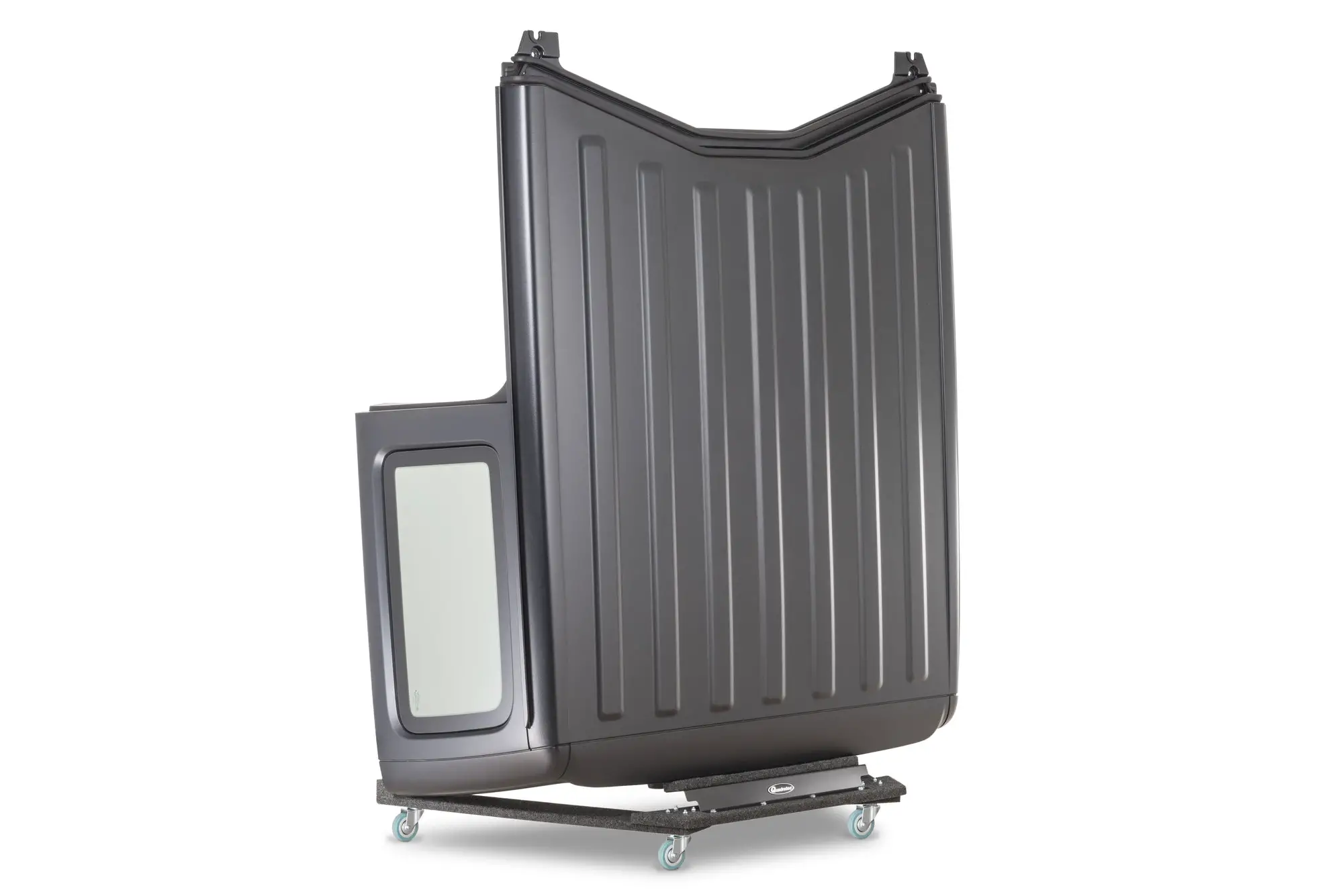Jeep Wranglers are a popular off-road vehicle that can drive through mud, snow, sand, and more. The Wrangler is designed to handle rugged terrain, but icy or wet roads might be a challenge if you’ve never experienced them in one of these vehicles. Potential buyers are also concerned about the roof leaking when it’s raining.
Jeep Wranglers are good in the rain because they provide 4×4 traction, heavy components to keep them from sliding, and sealed electrical ports to prevent various hazards. The Wrangler also has a water-resistant interior with drain plugs to remove excess moisture from rainy days and water fording.
In this post, we’ll also break down how you can keep your Jeep Wrangler dry when it’s raining, tips to deal with hydroplaning, and how you can make it operate much better on wet roads and off-roading spaces. You’ll also learn how they function in heavy rain and more!
How Are Jeep Wranglers In the Rain?
Since Wranglers are made for off-roading, they shouldn’t feel like a chore to drive in the rain. Whether it’s pouring like a shower or slightly drizzling, rain can be a dangerous factor for driving safely. Jeep has made several improvements to reverse their old school reputation of tipping over and hydroplaning in the rain.
Here are four notable reasons Wranglers perform excellently in the rain:
- Jeep Wranglers are water-resistant. They’re made to wick away moisture, preventing rust, mildew, mold, and corrosion. However, it’s important to keep in mind that Wranglers aren’t waterproof. You can’t expect them to stay sealed without regular maintenance (we’ll discuss a handful of tips in the final subheading).
- A Wrangler’s 4×4 transmission is an excellent choice for rainy driving. Auto123 explains how well the 4WD kicks into action when you flip the 4×4 lever. Using all four tires gives you the best control you could ask for from a four-wheel-drive vehicle. The 2WD Wrangler performs well in slightly rainy conditions.
- The Wrangler’s high ground clearance keeps it from sliding into debris in the road. US News points out the Wrangler has an impressive 10.8 ground clearance, letting it glide over sticks, rocks, and other debris that blows in the road during a rainstorm. You can lift your Jeep to add more height, too.
- The Jeep Wrangler includes a top-notch heating system to prevent condensation from rain and interior warmth. Many vehicles have heating buttons that fog the window, making it difficult to see. The Wrangler heats the window from the bottom, removing and preventing condensation from getting in the way while driving.
Wranglers are much better in the rain than they used to be. They can handle sharp turns and wet roads when you activate the 4×4 mode. Unfortunately, Jeep Wranglers aren’t water-tight, which means you might run into a few issues after a heavy rainy season. To learn how to keep your Wrangler from getting wet inside, read on.
Can Jeep Wranglers Get Wet Inside?
Are you worried about your softshell or hardtop Wrangler getting soaked or rusted? Convertible vehicles are no stranger to leaks, but Jeep has made several improvements to make them safer and cleaner. However, it’s best to keep a few suggestions ready to go if you have to repair or prevent water damage.
Review these three must-know features of Wranglers:
- Use the drain plug to remove excess rain from inside of the Jeep. Many Wranglers have drain plugs to pour water out of the trunk and interior. Twist the plugs to loosen them and get rain and moisture away from the vehicle. These simple plugs are easy to seal with the provided plug. Push it through the hole, and your Wrangler will be ready to go.
- Inspect the rubber seals before driving your Wrangler in the rain. Check the weather stripping around the removable top (or the shell if it’s a hardtop), windows, doors, and so on. Repairing the seals will prevent water from leaking into your Wrangler. Ensure they’re secured every time you remove or replace the top.
- Old hardtop Wranglers can experience leaking. If you own an old-school Wrangler, the top will likely leak. If it’s not dripping, you either have good luck or excellent seals. Keep an eye on them to ensure they don’t let water through the cracks. The older the Jeep gets, the more you’ll have to repair the seals.
Drain plugs and seals can provide optimal water resistance. If you’ve never located or used your Jeep Wrangler’s drain plugs, check out this helpful video tutorial on YouTube:
Do Jeep Wranglers Hydroplane Easily?
Jeep Wranglers were known to tip over or hydroplane many decades ago. Their high center of gravity and boxy shape make them a primary target for flipping. However, tipping and slipping aren’t nearly as common as they used to be.
There’s a significant difference between driving fast on wet, windy roads in a 2×4 and being in control with a 4×4. We’ll compare the reasons below.
4WD Wranglers Perform Well On Wet Roads
4×4 Wranglers use all of their tires to improve weight, traction, handling, and more. A 4WD Jeep Wrangler is one of the best vehicles on the market for on-road and off-road rainy driving. You won’t have to worry about tipping over, thanks to the wide base and weight balancing. Keeping your vehicle’s tires slightly deflated prevents them from hydroplaning.
2WD Wranglers Are Susceptible to Hydroplaning
If you drive a 2×4 Wrangler, it’s best to take it slow. Don’t whip around corners or accelerate on wet pavement. Most modern Wranglers are 4×4, but some older models have a 2×4 option prone to sliding on wet roads. If there’s not enough traction, switch to the 4×4 mode (all 4×4 models have a 2×4 mode and a 4×4 mode).
Note: Hydroplaning is a scary situation, but panicking can make it worse. Keep the Wrangler’s wheel straight and make subtle motions to align it with the road. It’s better to pull to the side of the road than hydroplane around the highway.
Tips to Make Your Wrangler Better in Rainy Conditions
Try these suggestions to improve your Jeep Wrangler’s rainy driving experience:
- Seal and repair all of the water seals throughout the Wrangler. You can use silicone sealant to waterproof your Jeep while waiting for new seals. It stops leaks for a few weeks while waiting for the weather stripping to arrive.
- Switch to the 4×4 mode (if available) when the rain turns to black ice. More wheels equate to more traction, which is invaluable when driving on slippery roads (or mud and snow).
- Fix any broken hardtop bolts. Bull Dawg MFG shows broken bolts are one of the primary reasons hardtop Jeeps leak. Many drivers assume a hardtop won’t leak, but that’s far from the truth. They last longer than soft tops, but there are many necessary repairs to keep them in top shape.
- Choose the best tires for rainy conditions. All-terrain or rain tires are the best choices since they have deep grooves and provide excellent traction. The goal is to prevent hydroplaning, which is exactly what these two tires provide. Off-road tires are adequate for driving off-road during rain, though.
Conclusion
Jeep Wranglers are made for off-roading, but they’re not too bad at driving on rainy roads, either. Everything from the drain plugs to the 4×4 tire traction makes it a suitable vehicle for rainy regions throughout the year. 2×4 Wranglers may experience hydroplaning, but it’s not an issue for 4×4 models.
Sources
- YouTube: Jeep Wrangler Drain Plugs
- Auto123: A Jeep Wrangler in Winter
- Bull Dawg MFG: 5 Tips on How to Stop Your Jeep Hardtop from Leaking
- Jeep: 2021 Jeep Wrangler
- US News: 14 SUVs with the Highest Ground Clearance


